Header image from National Park Service, Voyageurs National Park, Minnesota.
The state of Minnesota was admitted to the U.S.A. on May 11, 1858 as the 32nd state.
Bird: Common Loon
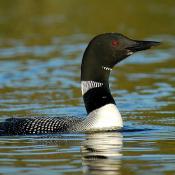 The common loon is the provincial bird of Ontario, and it appears on Canadian currency, including the one-dollar “loonie” coin and a previous series of $20 bills. In 1961, it was designated the state bird of Minnesota, and appears on the Minnesota State Quarter. The common loon is an expert fisher, catching its prey underwater by diving as deep as 60 m (200 ft).
The common loon is the provincial bird of Ontario, and it appears on Canadian currency, including the one-dollar “loonie” coin and a previous series of $20 bills. In 1961, it was designated the state bird of Minnesota, and appears on the Minnesota State Quarter. The common loon is an expert fisher, catching its prey underwater by diving as deep as 60 m (200 ft).
The voice and appearance of the common loon has made it prominent in several Native American tales. These include an Ojibwe story of a loon that created the world, and a Micmac saga describing Kwee-moo, the loon who was a special messenger of Glooscap (Glu-skap), the tribal hero. The tale of the loon’s necklace was handed down in many versions among Pacific Coast peoples.
Flower: Pink & White Lady’s slipper
Wild native orchid. It is the state flower of Minnesota, United States, and the provincial flower of Prince Edward Island, Canada. It is illegal to pick or uproot a showy lady’s slipper flower in Minnesota. contains an irritant, phenanthrene quinone or cypripedin. The plant is known to cause dermatitis on the hands and face. Native American folklore tells the story of a young maiden who ran barefoot in the snow in search of medicine to save her tribe, but was found collapsed on the way back from her mission with swollen, frozen feet. As a result, beautiful lady slipper flowers then grew where her feet had been as a reminder of her bravery. In addition to inspiring folklore, lady slipper roots were also widely used by Native Americans as medicinal herbs.
Tree: Norway Pine or Red Pine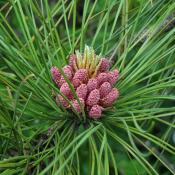
Minnesota is the only state to refer to the red pine as a Norway pine. The Minnesota Legislature noted “the sturdiness and majesty of the tree, and how it helped lay the foundation for the wealth of Minnesota.”
State Quarter
From theus50.com
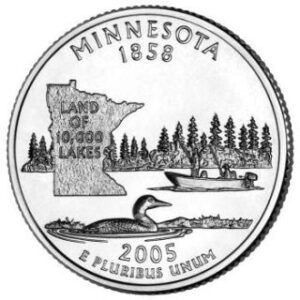
The second quarter to be released in 2005 commemorates the State of Minnesota, “Land of 10,000 Lakes.” The design features a tree-lined lake with two people fishing, a loon on the water, and a textured outline of the State surrounding its nickname, “Land of 10,000 Lakes”.
The “Land of 10,000 Lakes” actually contains more than 15,000 such bodies of water whose total shoreline exceeds 90,000 miles – more than California, Hawaii and Florida combined. Equally renowned as the home of the headwaters of the mighty Mississippi River, the name Minnesota is derived from the Dakota Sioux word for “cloudy water”.
The natural beauty of Minnesota is vividly depicted on the reverse of this new quarter-dollar. Lined with Norway Pine, many of the lakes throughout the State offer much in the way of outdoor recreation, as well as providing a home for the graceful loon, Minnesota’s state bird. Minnesota is also home to the Boundary Waters Canoe Area Wilderness. This one- million acre wilderness area was established by Congress in 1978, and contains more than 1,500 miles of canoe routes and nearly 2,200 designated campsites.
Capital: St. Paul, Minnesota
Nickname: North Star State, Gopher State, Bread & Butter State
Motto: The star of the north
Minnesota is named after the Minnesota River. The river got its name from the Sioux Indian word “Minisota.” That word comes from the words “minni,” meaning “water,” and “sotah,” meaning “sky-tinted” or “cloudy.” Therefore, Minnesota means “sky-tinted water” or “cloudy water.” The Indians gave the river this name because of the blue clay that washed into it. From Sheppard software.com
The first known Europeans to arrive in Minnesota were French explorers such as Pierre Radisson and Medard des Groseilleirs. They first visited the region in the 1650s and mapped out the coast of Lake Superior and claimed the land for France.
The French made an agreement with the Ojibwa peoples to trade for furs in 1671. French trader Daniel Graysolon, Sieur Du Luth explored the area and, in 1679, he helped to negotiate a peace agreement between the Dakota and Ojibwa tribes. The city of Duluth is named after him.
After the French and Indian war between the British and French ended in 1763, the British took over the eastern portion of Minnesota. However, the land was only in British hands for 20 years when it became a territory of the United States after the Revolutionary War. In 1803, the United States purchased the rest of Minnesota from France as part of the Louisiana Purchase.
After buying the Louisiana Purchase, President Thomas Jefferson sent out explorers to learn more about the vast new land. Explorer Zebulon Pike arrived in Minnesota in 1805. His main goal was to find the headwaters of the Mississippi River. He didn’t find the source of the Mississippi, but he did sign a treaty with the Dakota Indians for land in the area.
In 1832, explorer Henry Schoolcraft finally found the source of the Mississippi River with the help of the Ojibwa peoples. He named the source Lake Itasca. Later, poet Henry Wadsworth Longfellow would write The Song of Hiawatha based on Indian legends and stories told by Schoolcraft about Minnesota.
The first major U.S. outpost in Minnesota was Fort Snelling which was completed in 1825. It was built at the point where the Minnesota and the Mississippi Rivers come together. Two major cities eventually were built up on each side of the Mississippi River. The city on the west side was called Minneapolis and the city on the east side St. Paul. The original name of the settlement that became St. Paul was Pig’s Eye for the French-Canadian whiskey trader, Pierre “Pig’s Eye” Parrant, who had led squatters to the settlement.
Today these two cities are often referred to as the Twin Cities and are the two largest cities in Minnesota.
In 1849, Minnesota became a territory of the United States. Over the next two decades, numerous immigrants from northern European countries such as Germany and Sweden settled in Minnesota. On May 11, 1858 Minnesota was admitted to the Union as the 32nd state.
Minnesota’s waters flow outward in three directions: north to Hudson Bay in Canada, east to the Atlantic Ocean, and south to the Gulf of Mexico.
Minnesota has 90,000 miles of shoreline, more than California, Florida and Hawaii combined. Minnesota has one recreational boat per every six people, more than any other state.
The St. Lawrence Seaway opened in 1959 allowing oceangoing ships to reach Duluth.
The Mall of America in Bloomington is the size of 78 football fields — 9.5 million square feet.
Minnesota Inventions: Masking tape and Scotch tape, the stapler, Wheaties cereal, Bisquick, HMOs, the bundt pan, Aveda beauty products, water skis, rollerblades, snowmobiles, the pop-up toaster, armored cars, Tonka trucks, Spam, and Green Giant vegetables.
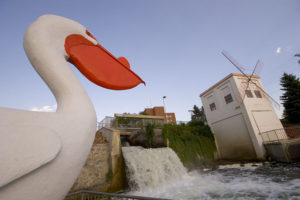 The world’s largest pelican, Pelican Pete, stands at the base of the Mill Pond dam on the Pelican River in downtown Pelican Rapids. The 15 1/2 feet tall concrete statue was built in 1957. Image by Michael Wifall – Flickr: Pelican Pete, CC BY-SA 2.0, Link
The world’s largest pelican, Pelican Pete, stands at the base of the Mill Pond dam on the Pelican River in downtown Pelican Rapids. The 15 1/2 feet tall concrete statue was built in 1957. Image by Michael Wifall – Flickr: Pelican Pete, CC BY-SA 2.0, Link
Minneapolis’ famed skyway system connecting 52 blocks (nearly five miles) of downtown makes it possible to live, eat, work and shop without going outside.
The climate-controlled Metrodome is the only facility in the country to host a Super Bowl, a World Series and a NCAA Final Four Basketball Championship.
The first open heart surgery and the first bone marrow transplant in the United States were done at the University of Minnesota.
Rochester is home of the world famous Mayo Clinic. The clinic is a major teaching and working facility. It is known world wide for its doctor’s expertise and the newest methods of treatments.
Private Milburn Henke of Hutchinson was the first enlisted man to land with the first American Expeditionary Force in Europe in WWII on January 26, 1942.
In Olivia a single half-husked cob towers over a roadside gazebo. It is 25 feet tall, made of fiberglass, and has been up since 1973.
The first Children’s department in a Library is said to be that of the Minneapolis Public Library, which separated children’s books from the rest of the collection in Dec. 1889.
The first Aerial Ferry was put into Operation on April 9, 1905, over the ship canal between Duluth to Minnesota Point. It had room enough to accommodate 6 automobiles. Round trip took 10 min.
Introduced in August 1963, The Control Data 6600, designed by Control Data Corp. of Chippewa Falls, was the first Super Computer. It was used by the military to simulate nuclear explosions and break Soviet codes. These computers also were used to model complex phenomena such as hurricanes and galaxies.
Candy maker Frank C. Mars of Minnesota introduced the Milky Way candy bar in 1923. Mars marketed the Snickers bar in 1930 and introduced the 5 cent Three Musketeers bar in 1937. The original 3 Musketeers bar contained 3 bars in one wrapper, each with different flavor nougat.
There are 201 Mud Lakes, 154 Long Lakes, and 123 Rice Lakes in Minnesota.
Author Laura Ingalls Wilder lived on Plum Creek near Walnut Grove.
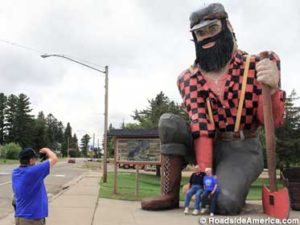 Akeley is birthplace and home of world’s largest Paul Bunyan Statue. The kneeling Paul Bunyan is 20 feet tall. He might be the claimed 33 feet tall, if he were standing. (Hackensack, MN is the home of Paul Bunyan’s sweetheart, Lucette Diana Kensack.)
Akeley is birthplace and home of world’s largest Paul Bunyan Statue. The kneeling Paul Bunyan is 20 feet tall. He might be the claimed 33 feet tall, if he were standing. (Hackensack, MN is the home of Paul Bunyan’s sweetheart, Lucette Diana Kensack.)
Hibbing is the birthplace of the American bus industry. It sprang from the business acumen of Carl Wickman and Andrew “Bus Andy” Anderson – who opened the first bus line (with one bus) between the towns of Hibbing and Alice in 1914. The bus line grew to become Greyhound Lines, Inc.
The first official hit in the Metrodome in Minneapolis was made by Pete Rose playing for the Cincinnati Reds in a preseason game.
Minnesotans have consistently cast their Electoral College votes for Democratic presidential candidates since 1976, longer than any other state. Minnesota is the only state in the nation that did not vote for Ronald Reagan in either of his presidential runs. Minnesota has gone for the Democratic Party in every presidential election since 1960, with the exception of 1972, when it was carried by Republican Richard Nixon.
Minnesota is known for a politically active citizenry, and populism has been a long-standing force among the state’s political parties. Minnesota has a consistently high voter turnout. In the 2008 U.S. presidential election, 78.2% of eligible Minnesotans voted—the highest percentage of any U.S. state—versus the national average of 61.2%. Voters can register on election day at their polling places with evidence of residency.
Strange Laws:
-Mosquitoes are decreed a public nuisance
-It is against the law to stand around any building without a good reason.
-A person may not cross state lines with a chicken atop his head.
-It is illegal to sleep naked.
-You must wear a shirt while driving a motorcycle
-Oral sex is prohibited.
-All bathtubs must have feet.
-Minnesota tax forms ask for your date of death.
-A woman isn’t allowed to cut her own hair without her husband’s permission.
-Rats have a 10 cent bounty.
-It’s illegal to tease skunks.
People:
- LaVerne, Maxene, and Patti Andrews, singers
- Warren E. Burger, jurist
- William Demarest, actor
- Bob Dylan singer, composer
- Francis Scott Fitzgerald, author “The Great Gatsby”
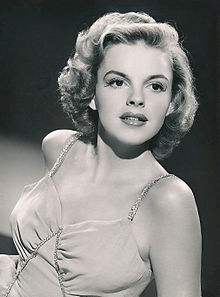 Judy Garland, singer, actress
Judy Garland, singer, actress- Jean Paul Getty, oil executive
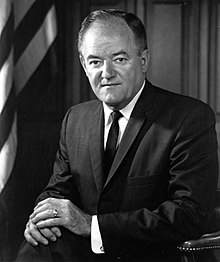 Herbert Humphrey, politician, vice-president for Lyndon Johnson
Herbert Humphrey, politician, vice-president for Lyndon Johnson- Garrison Keillor, humorist
- Jessica Lange, actress
- Sinclair Lewis, author “Main Street”
- John Madden, sportscaster
- Roger Maris, baseball player
- E. G. Marshall, actor
- Charles Horace Mayo, surgeon
- William J. Mayo, surgeon
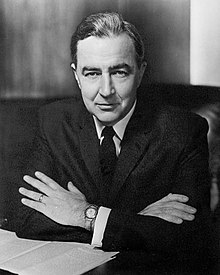 Eugene J. McCarthy, senator, politician
Eugene J. McCarthy, senator, politician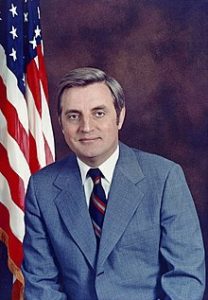 Walter F. Mondale, Vice President for Jimmy Carter, candidate for President 1984
Walter F. Mondale, Vice President for Jimmy Carter, candidate for President 1984- “Prince” Rogers Nelson, singer
- Jane Russell, actress
- Winona Ryder, actress
- Charles Monroe Schulz, cartoonist
- Michael Todd, producer
- Jesse Ventura politician, entertainer, governor 1999-2003
Credits:
See ducksters.com
See 50 states.com
